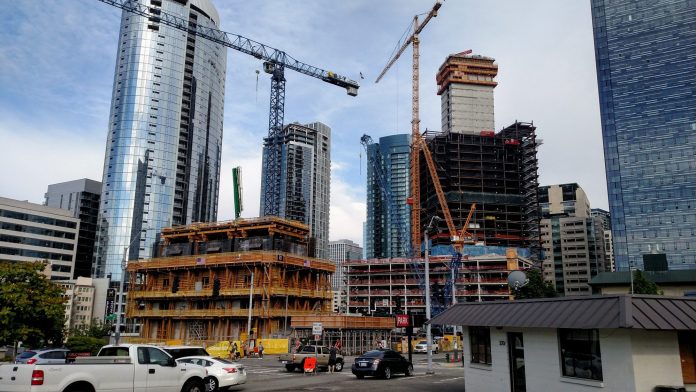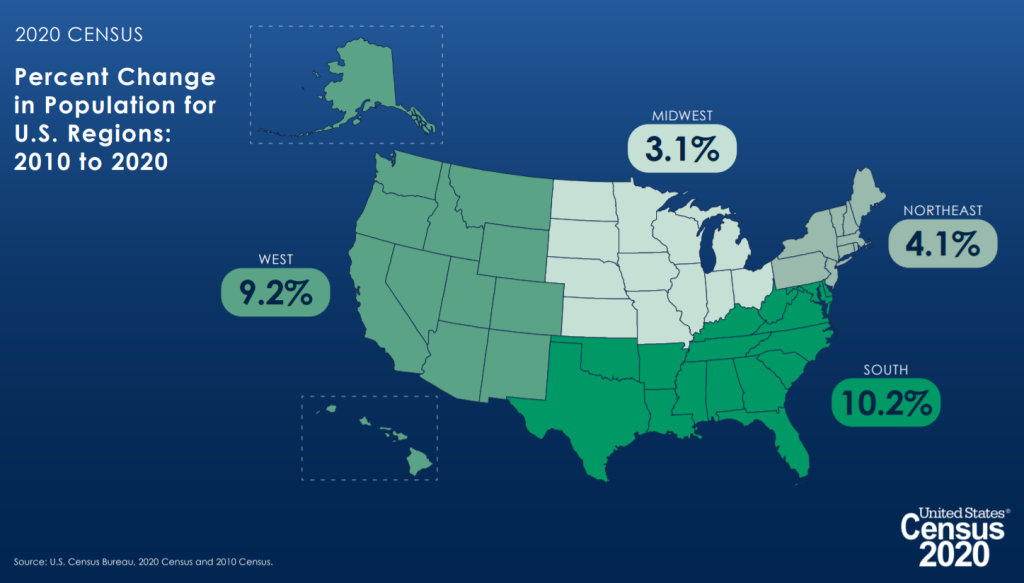The United States Census bureau released its decennial population figures today and revealed that Washington state’s 7,705,281 residents represents 14.6% growth or nearly one million additional residents since the 2010 Census.
The nation grew by 7.35%, surpassing 331 million residents. That’s the slowest growth rate since the Great Depression. Washington’s 14.6% was nearly twice the national average, but since the state gained a seat in 2010, it didn’t outpace the national growth rate enough to gain another seat this time around.
Among Washington cities, Seattle led the way and added more than 150,000 residents since its 2010 Census total of 608,660. The city-by-city Census figures aren’t out yet, but the Washington State Office of Financial Management (OFM) estimated Seattle’s population was 761,100 in its April 1st, 2020 figures. King County, meanwhile, grew by at least 330,000 residents based on preliminary OFM figures. Collectively, King, Snohomish, and Pierce counties added more than half a million residents since 2010 and account for the majority of the state’s population growth, which was 980,741 to be exact.
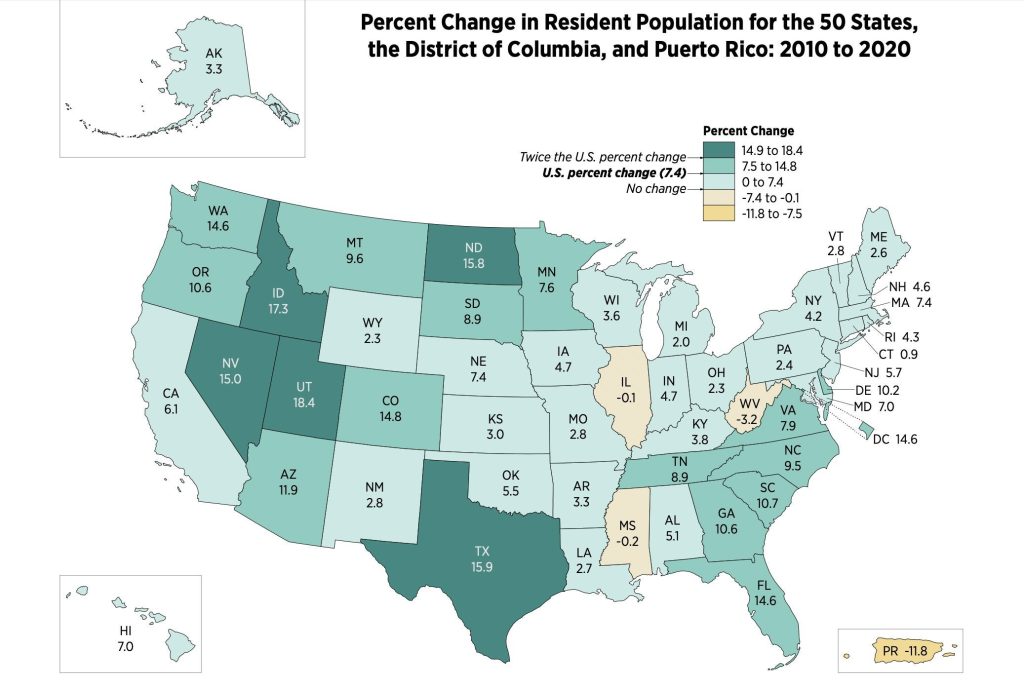
States that gained seats in Congress (and thus also the Electoral College) include Texas with two, and Oregon, Montana, Colorado, North Carolina, and Florida each gained one seat, as illustrated below. Prognosticators had expected Arizona to gain a seat and Texas and Florida to each gain one more seat than they did, but that didn’t come to pass.
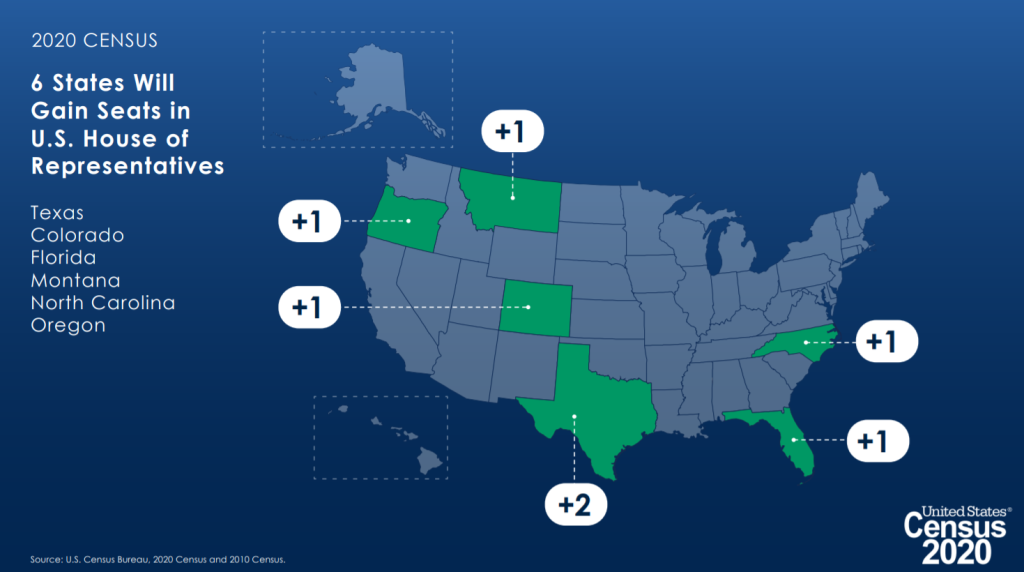
Fewer states gaining, meant the “on the bubble” states of Alabama, Rhode Island, Minnesota held on to keep their allotment of seats. The states that lost a seat are shown below. Most of them are in the Rust Belt or Northeast. New York, by the way, was just 89 residents short of keeping its seat.
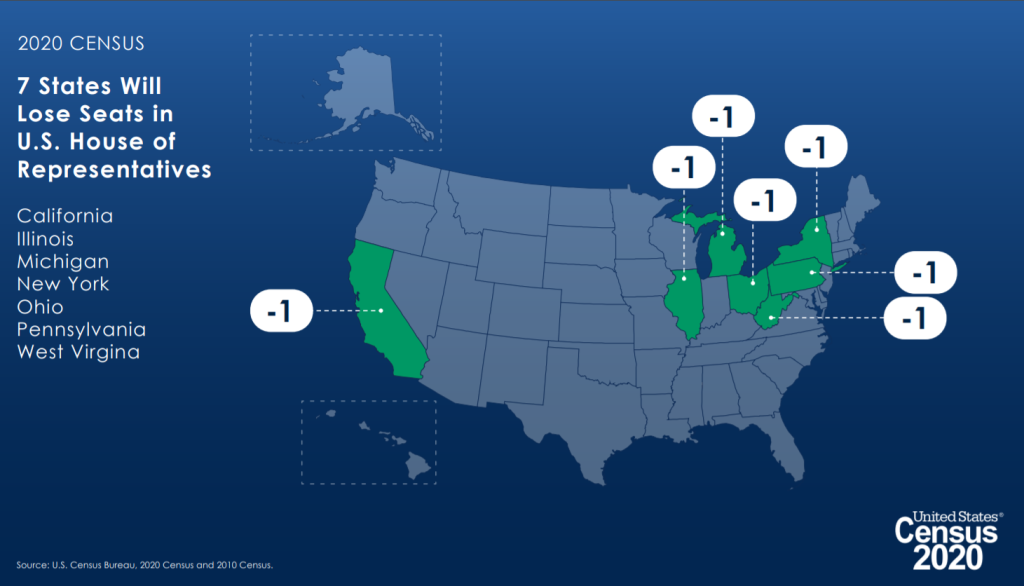
The geographic exception was California, which lost a seat as predicted after posting a below-average growth rate of 6.1%. Certainly, California’s restrictive housing and land use policies were a major culprit, driving up housing prices and displacing residents. This in turn helped fuel Oregon’s growth and seat gain.
Overall, the South and West regions led the nation’s growth, with 10.2% and 9.2% growth respectively. The Midwest grew the slowest with just 3.1% growth over the decade.
If Washington state keeps growing, outpacing the national average (especially if it continues to double it up), it’s only a matter of time before it gains another seat. It could well be the 2030 Census.
The 2020 shift in seat allotments appears to be a mixed bag for the tilt of Congress and the Electoral College. President Joe Biden’s decisive electoral victory would drop from 306 electoral votes to 303 under the new map. However, a few states that Trump carried and gained a seat like North Carolina and Florida are swing states. And Texas is trending in that direction.
Redistricting could also lead to more urban districts being drawn given that metropolitan areas are leading the way on growth, as I write about before. But gerrymandering certainly complicates that.
Doug Trumm is publisher of The Urbanist. An Urbanist writer since 2015, he dreams of pedestrian streets, bus lanes, and a mass-timber building spree to end our housing crisis. He graduated from the Evans School of Public Policy and Governance at the University of Washington in 2019. He lives in Seattle's Fremont neighborhood and loves to explore the city by foot and by bike.

